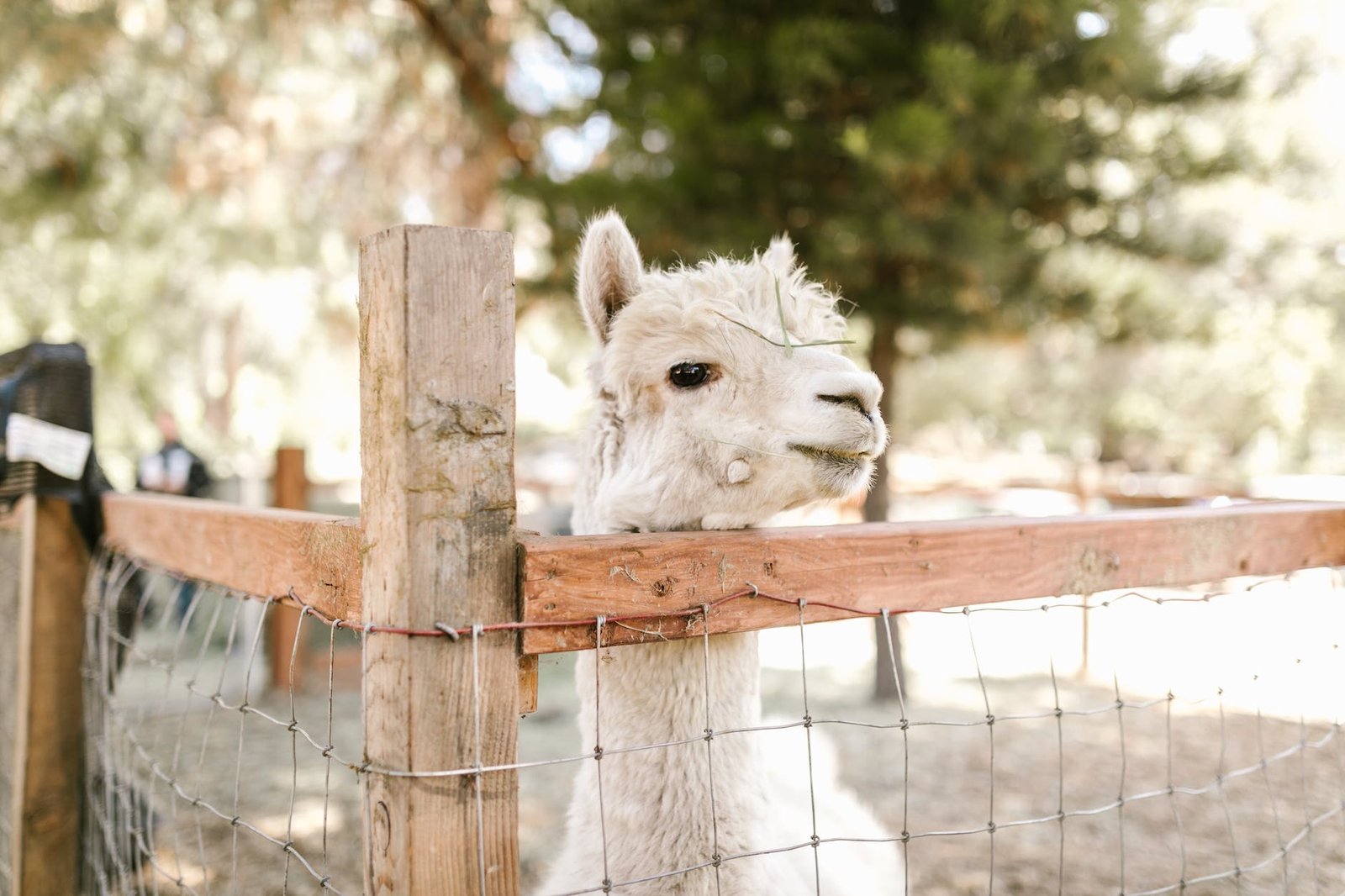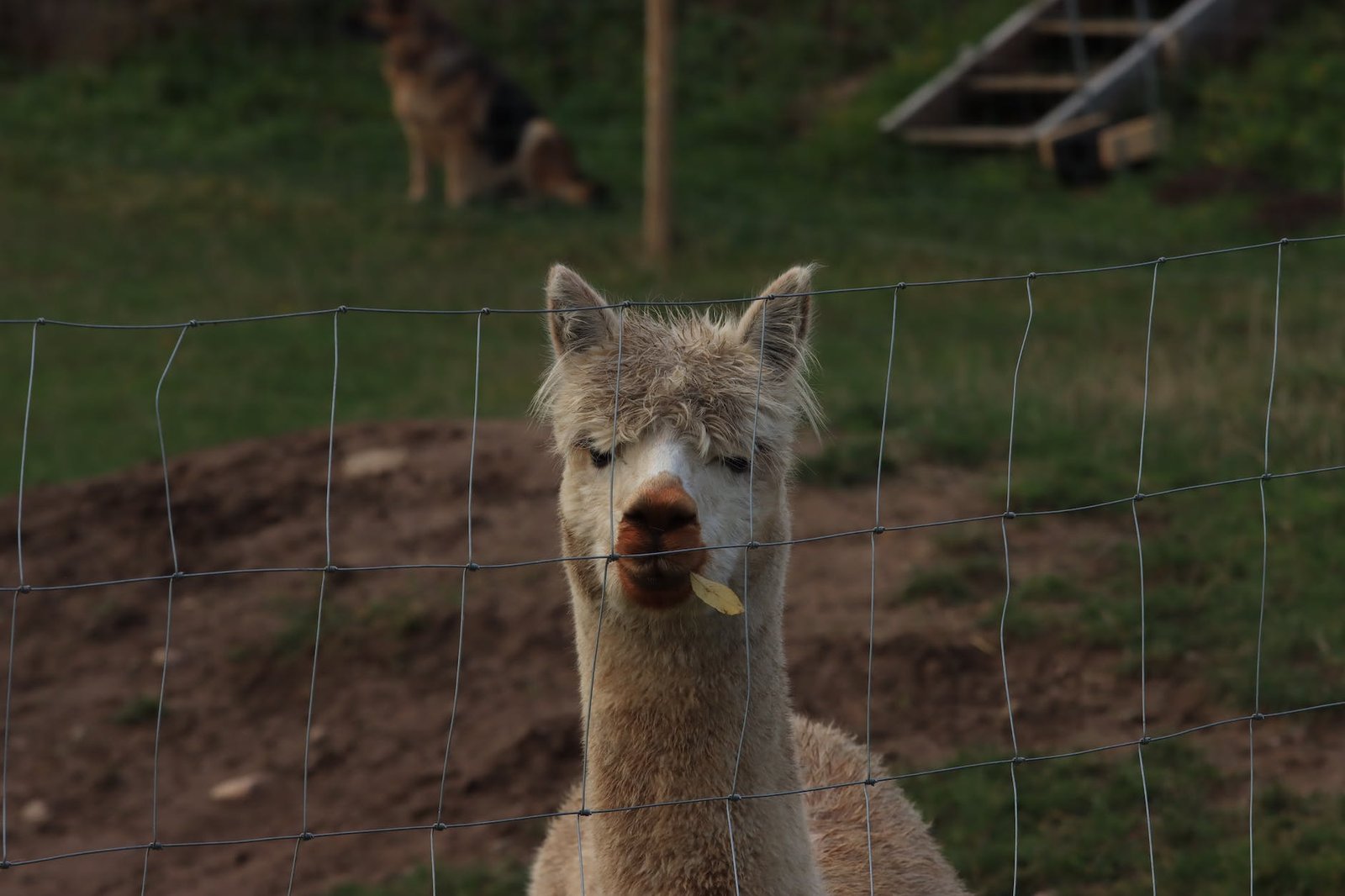Can Alpacas Jump Fences? Understanding Alpaca Behavior and Fence Security
Ever found yourself wondering, “Do alpacas jump fences?” It’s a question that’s puzzled many a farmer and alpaca enthusiast. You see, these gentle, woolly creatures are a sight to behold but understanding their behavior can be a bit of a challenge.
Alpacas, like their llama cousins, are known for their unique characteristics. One of the many intriguing questions about them revolves around their ability, or lack thereof, to jump fences. It’s not as straightforward as you might think.
Key Takeaways
- Alpacas are known for their curious and intelligent nature. Physically, they are agile and strong but are not natural jumpers due to their shorter legs, compact body, and low center of gravity.
- While alpacas typically prefer to stay grounded, it’s entirely possible for an alpaca to jump a low fence, especially if they feel threatened or cornered.
- Alpacas and llamas, though closely related, have distinct differences. Llamas are generally larger with a greater jumping capability.
- Factors affecting an alpaca’s ability to jump fences include the animal’s height and weight, breed, and motivations or fear levels.
- Alpacas typically will not jump over fences. Any attempt to breach a boundary is more likely to be an effort to go under or through a broken part of a fence.
- To keep alpacas safe and secure, installing robust, high fences, adding structural deterrents, conducting regular fence inspections, considering the breed of alpaca, and improving living conditions within the fence are all recommended measures.
The Behavior of Alpacas
Understanding the behavior of alpacas is key to answering the question: Can alpacas jump fences? One thing’s for certain, these animals are full of surprises!
Alpacas are known for their curious and intelligent nature. They’re social creatures, often found in close-knit herds, and rely heavily on their senses of sight and hearing to navigate their environment. They communicate with each other using body language, like ear positioning, and a series of vocalizations.
Arguably one of the most distinctive traits about alpacas is their spitting. It’s widely misunderstood, but in the alpaca world, it’s a standard form of communication. It’s primarily used to establish hierarchy within the herd or express displeasure.
In terms of physical capabilities, alpacas are surprisingly agile and strong, but they’re not natural jumpers. Unlike their llama cousins, who have a tendency to leap over fences, alpacas usually prefer to stay grounded. This is mostly due to their physique. Alpacas have shorter legs, a compact body, and a low center of gravity, which does not lend itself to jumping.

However, this should not create a false sense of security among alpaca owners. Despite their typical grounded behavior, it’s entirely possible for an alpaca to jump a low fence, especially if they feel threatened or cornered.
Coming up, we’ll delve into further detail on the factors influencing alpaca fence jumping, including their height, weight, and breed. Understanding these elements will greatly assist in ensuring the safety and well-being of these interesting and lovable animals.
Alpacas vs Llamas: Similarities and Differences
We’re often fascinated by the world of alpacas and llamas, their behavior, and distinctive physical traits. These beautiful animals, members of the camelid family, have various interesting features. It’s essential to contrast and compare these closely related species to fully understand why an alpaca might display fence-jumping behavior.

Let’s first explore their similarities. Alpacas and llamas have superb defenses against predators. Their thick coats protect them from harsh climates, while their keen senses of sight and hearing alert them to danger. Both communicate using body language and vocalizations, including spitting. Yes, you heard it right – they spit!
Yet they are not just defined by these shared traits. Some clear differences do set them apart.
Size and Shape
Llamas are generally larger, standing up to 6 feet tall at the head. Alpacas, on the other hand, measure about 4 feet to the shoulder. Llamas have a longer face and curved ears, while alpacas have a squarer face and spear-shaped ears.
Behavior
Llamas, being natural leaders, are often used as guard animals for livestock. Alpacas are typically more nervous and cautious, preferring the safety of their herd.
Physical Capabilities
Arguably the most intriguing difference is their physical abilities. Llamas are sturdy animals with longer legs, giving them more jumping capability. Alpacas, with their compact bodies and shorter legs, don’t possess a natural tendency to jump.
In the following section, we’ll delve deeper into the factors influencing an alpaca’s potential to clear a fence- their height, weight, and breed. Stay tuned for more insights into the enigmatic world of alpacas.
Factors Affecting Alpacas’ Ability to Jump Fences
Now that we’ve discussed the natural characteristics that influence the alpacas’ incapability to jump fences, it’s time to dive deeper into specific factors that may change this general rule. These factors range from the physical condition of the alpaca to the fear or motivation level in particular situations.
First off, the height and weight of an alpaca play essential roles in its ability to jump. Alpacas come in various sizes, but they generally weigh between 120 to 170 pounds.
| Factor | Average |
|---|---|
| Height | 35 inches |
| Weight | 145 pounds |
This moderate size and weight make it difficult for them to clear fences, unlike their larger, more agile cousins, the llamas.
Furthermore, the breed of the alpaca is a key factor. Though it’s not a widely known fact, there are two breeds of alpacas, Huacaya, and Suri. Huacaya alpacas are fluffier and more robust, whereas Suri alpacas are leaner and taller. Generally, Suri alpacas, due to their body structure, find it harder to jump fences compared to Huacaya alpacas.

Lastly, it’s also integral to note that an alpaca’s motivation or fear levels can drive it to perform actions it normally wouldn’t, including jumping fences. If a predator is approaching or if they perceive a significant threat, their survival instincts kick in. However, such cases are far and few between due to their inherent characteristics and will be discussed in depth in the upcoming sections.
Can Alpacas Jump Fences?
A question that I often receive is, “Can alpacas jump fences?” To shed light on this query, let’s delve deeper into the world of these intriguing creatures.
No, alpacas can’t typically jump over fences – it’s not in their nature. They’re built with a compact body and short legs that inhibit their leaping abilities. While their larger counterparts, the llamas, are capable of hurdle jumping, alpacas are more grounded due to their physical attributes.
The height and strength of a fence play a key role in whether an alpaca might try to overcome it. Let’s take a snapshot of some facts. Here’s a concise table that puts into perspective the bounding capability of an alpaca.
| Attribute | Alpacas |
|---|---|
| Average Weight | 120 – 170 lbs |
| Average Height | 2.5 – 3 ft |
| Jumping Ability | Limited |
Unlike other livestock who may be prone to jumping or climbing fences like sheep or goats, alpacas are more like to go under or through a broken part of a fence. For those with alpacas in their care, a sturdy, well-maintained fence of suitable height is therefore a key aspect to ensure the safety and containment of these animals.
The breed of the alpaca also plays a significant role in their fence jumping prowess. For instance, Suri alpacas are rather delicate and possess a large amount of lush, hanging fleece that can hinder their movement, making jumping even more difficult. Conversely, Huacaya alpacas have a more robust physique but are still not naturally inclined to jump.

In the end, alpacas are more likely to use their exceptional intelligence and curiosity to find ways around a fence rather than over it. They’d rather explore a gate latch or look for a gap than take a bounding leap over a barrier. To keep these beautiful, curious creatures safe and secure within your premises, keeping the fences well-maintained and secure goes a long way.
How to Prevent Alpacas from Jumping Fences
Having established that alpacas don’t typically jump fences but can potentially breach them through weaker areas, it’s imperative to take appropriate steps to secure the fence lines. There are several strategic actions you can adopt to reinforce your fences.
The most common solution is to install a robust and sturdy fence. Fences made of strong materials like welded wire, wood, or electric tape all make excellent choices. They should at least be 4 to 5 feet high to discourage any adventurous alpacas who may attempt to leap.
Introducing structural deterrents contains alpacas effectively as well. Adding a top line of wire, electric or not, serves as a visual barrier and thuwarts their attempts to get over the fence. Incorporating tight wire mesh discourages them from trying to push through gaps.
Frequent inspections and maintenance of the fences are crucial too. Alpacas are curious creatures and quick to spot any weaknesses. Regular checks can spot and repair any loose, broken, or weak points before they pose a risk.
Choosing the appropriate breed can also contribute to fence security. Suri alpacas, known for their delicate nature and hanging fleece, are less likely to jump fences than their other counterparts. Therefore, if jumping is a concern, considering the breed is an option.
Finally, enhancing the living conditions of your alpacas limits the need for them to seek what’s beyond the fence. Providing substantial pasture space, necessary shelter, interesting foraging materials, and regular human interaction makes the alpaca’s current environment more appealing.
I have created a quick checklist based on these strategies for easy reference:
- Install robust, high fences
- Add structural deterrents
- Regularly inspect and maintain fences
- Consider the alpaca breed
- Improve living conditions inside the fence







One Comment
Our picks
Alpaca & Wool Felted Sole Inserts: Comfy Upgrade?
Best Alpaca Socks for Hiking: Ultimate Comfort and Durability on Trails
Best Alpaca Halter for Comfort and Control